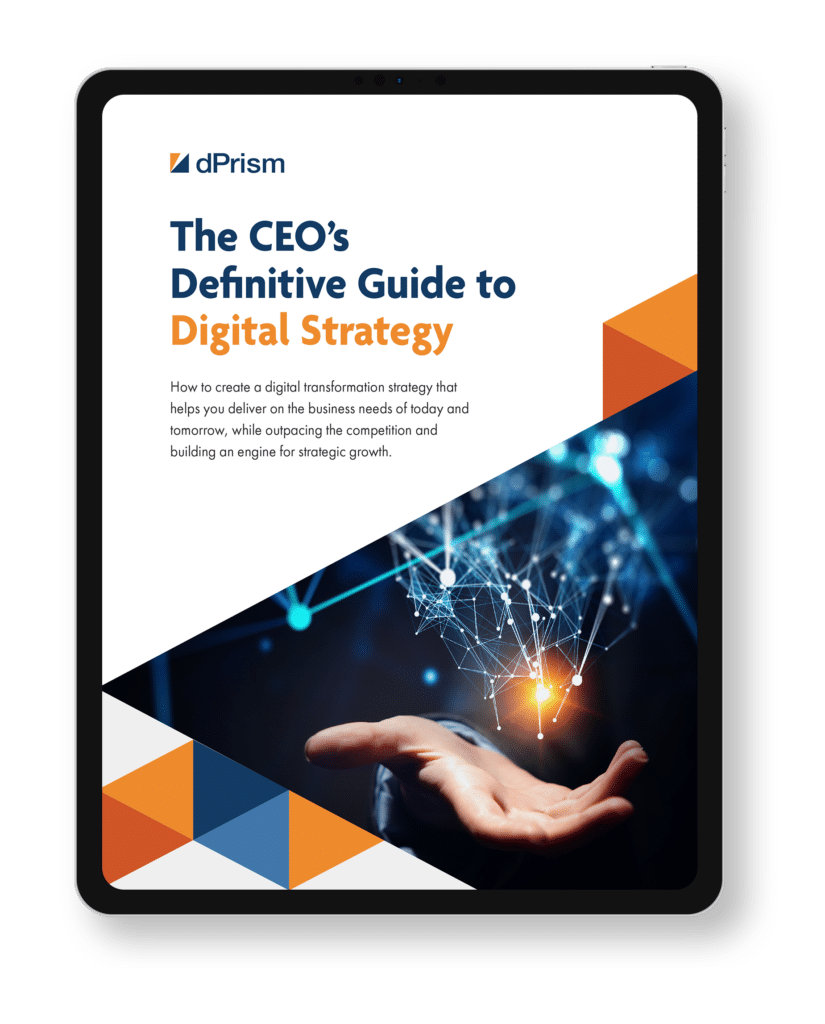When the internet emerged as a new channel for content providers many publishing companies created “new media” divisions. Online distribution was seen as something new and “other,” requiring a distinct operating model that would insulate the core business from these risky innovations. Today, of course, that’s all changed. Publishers have elevated their online operating model to be the core business – and the internet has emerged as the platform for “everything.”
Digital reality
Today’s version of new media is “digital transformation,” and it needs to evolve in the same way for media and publishing. However, many organizations with traditional product and service portfolios continue to see “digital” as something new that needs to be bolted on to the existing business. C-suite executives are focused on implementing a “digital strategy,” as if that is something distinct from the firm’s core strategy. It’s not.
Digital is not a strategy. Digital is a way of being.
Management must recognize that everything in business today is digital. Even the most traditional of firms communicate with clients and distributors via email, store their documents in the cloud, transact via electronic payments and manage manufacturing, inventory and logistics with sophisticated resource planning systems. The economy today is digital. To participate in this economy is to be digital. So, to thrive in today’s global economy firms don’t need a digital strategy – they need a modern operating model
A modern operating model
A modern operating model is one of continuous, iterative innovation and performance improvement founded on data-driven decision-making. Data is derived from two critical and intersecting feedback loops: The customer loop and the operations loop. How effectively an organization implements and leverages these feedback loops determines winners and losers in today’s economy.
The customer loop
The customer loop is enabled by two key capabilities: Marketing automation and agile product management.
Effective marketing requires the ability to identify distinct customer personas, segment needs, manage and direct customer journeys with the goal of converting anonymous multi-channel interactions into revenue generating, engaged and brand-loyal consumers. The data collected through this lifecycle of interactions is not only used to drive improvements in marketing effectiveness but feeds directly into product innovation, design and management.
Agile product management uses customer interaction data to validate design decisions and development priorities. Products are released to market as soon as they have added just enough value for the consumer to achieve financial, or competitive success metrics. Instrumentation in the product delivers usage and satisfaction data to drive prioritization and ongoing product enhancements.
Data from the customer loop is also channeled back into the operations loop to inform strategic decisions and day-to-day operational planning.
The operations loop
Strategy, like everything else in a modern operating model, is a continuous process — not something revised once-a-year or every three. An effective operations loop requires that strategy and execution be tightly integrated, and the key to this is universal data transparency and utilization.
Strategy means nothing without execution
In the modern operating model, strategy is deployed across an organization with defined metrics, expected outcomes and assigned accountability. Activities undertaken at every level of the organization are aligned to an overriding strategic objective.
Such a connected approach to strategic execution can only be accomplished if operational data is transparently surfaced and available to all participants in the organization. A connected modern operating model requires performance data to flow friction-free between business functions.
Similarly, data is only useful if it is valued and acted upon. Data is an asset to be managed and leveraged with the same care that an organization manages its cash.
Modern operations require modern culture
Organizational culture evolves at a much slower pace than technology or the ever-changing needs of customers. Effective implementation of a modern operating strategy requires an organizational culture that embraces continuous operational and product improvement. It also requires a culture that recognizes data as an asset to be shared and leveraged to drive continuous improvement rather than hoarded and protected to reinforce organizational fiefdoms.
A modern operating model demands strategic clarity.
The process of implementing a modern operating model falls squarely on the shoulders of top management. Leadership becomes the act of formulating hypotheses, clearly laying out challenges and engaging the organization to finding innovative solutions based on real data from both the customer and operations feedback loops.
It really is not about digital
If your organization is focused on executing a digital transformation as a ‘bolt on’ strategy, then you’re likely missing the real operating transformation required to be successful in our constantly shifting and disruptive business environment. The world today is digital. The question is how to change and adapt your operating structure, and the culture that sustains it.
Success today depends on a modern, data-enabled operating model, and an organizational culture that champions continuous improvement informed by robust customer and operations feedback loops.
Sign up for the bi-weekly dBrief email:

Jonathan Murray, EVP & CTO
Jonathan is responsible for platform transformation engagements through a unique blend of business strategy, sales, marketing, operations and policy experience. With 25 years of experience in digital transformation, he turns strategy into results by enabling organizations to thrive in a digital world through empowered cultures and modern operating models.
Explore additional executive insights and guidance from our team of consultants, all of whom have decades of operational experience making exactly the kinds of decisions you now face, or browse the library of case studies.
Client Impact Story: Marketing Automation
Discover how Mod Op Strategic Consulting helped transform a leading law firm’s ability to produce and track its digital messaging and communication.
Client Impact Story: Improving Workflow Processes
Considering robotic process automation (RPA)? Review the process we used to introduce RPA to a leading financial publisher.
















